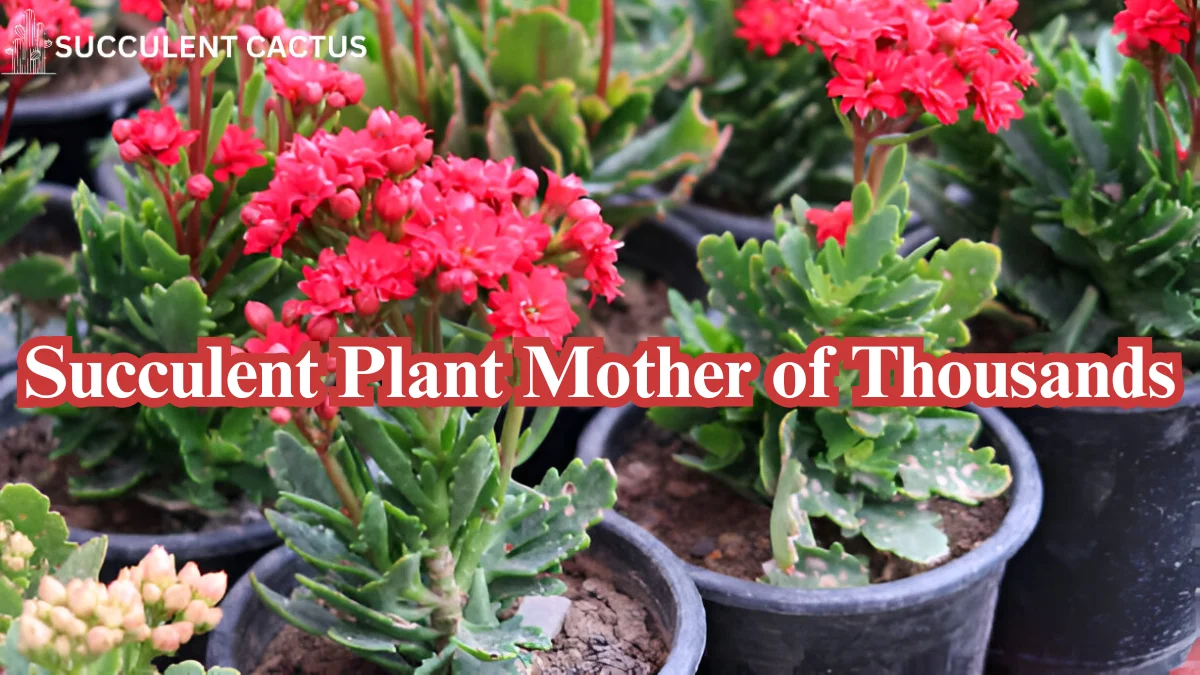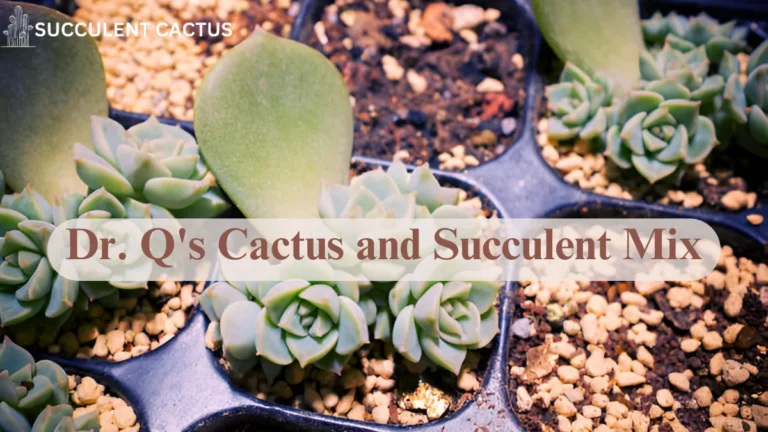The Ultimate Guide to the Succulent Plant Mother of Thousands

Succulent plants have gained immense popularity for their beauty and low-maintenance nature. One of the most fascinating varieties is the Mother of Thousands, also known as Kalanchoe Daigremontiana. This plant is not only captivating due to its appearance but also because of its ability to produce numerous plantlets on its leaves. In this guide, we’ll dive deep into the details of the Succulent Plant Mother of Thousands, exploring its care, propagation, and cultural significance.
Introduction to the Succulent Plant Mother of Thousands
The Mother of Thousands is a unique succulent that is well-known for its ability to reproduce extraordinarily. It produces tiny plantlets along the edges of its leaves, which eventually drop off and take root. This fascinating feature has earned it its name, as it can create hundreds or even thousands of offspring in a short period.
This plant, native to Madagascar, thrives in tropical climates and can survive in a variety of environments, making it a popular choice for succulent lovers around the world. In this section, we’ll explore the plant’s origins, characteristics, and appeal.
The Origins of Mother of Thousands
Native to Madagascar, the Kalanchoe Daigremontiana has found its way to homes and gardens across the globe due to its unique propagation method and stunning appearance. It is considered a hardy plant and grows well in regions with moderate to warm climates.
Key Characteristics of the Mother of Thousands
The Mother of Thousands is a fast-growing plant with large, fleshy leaves that are typically a light green color. The leaves are serrated and have tiny plantlets growing along their edges. These plantlets are small clones of the parent plant, and once they fall off, they can grow into independent plants.
The Appeal of the Mother of Thousands
The Mother of Thousands is popular because it is not only easy to care for but also a highly prolific plant. It’s an ideal choice for gardeners looking to add a touch of unique beauty to their homes. Additionally, its ability to propagate quickly makes it a great option for those who wish to expand their succulent collection without purchasing new plants.
Understanding the Propagation of the Mother of Thousands
One of the most fascinating aspects of the Succulent Plant Mother of Thousands is its ability to propagate itself rapidly. Unlike many plants that require seeds or cutting propagation, the Mother of Thousands produces plantlets that grow directly from the leaf edges. In this section, we’ll discuss how propagation works and how you can take advantage of this feature.
How Propagation Works
The Mother of Thousands has a unique asexual reproduction method where it produces tiny plantlets on the edges of its leaves. These plantlets, which are genetically identical to the parent plant, will eventually fall off when they are ready and root in the surrounding soil.
Caring for Propagated Plantlets
Once the plantlets fall off, it’s essential to ensure that they are placed in a well-draining soil mix for optimal growth. Although they are small, these plantlets require the same care as adult plants, including proper sunlight, occasional watering, and protection from harsh conditions.
Challenges in Propagation
While propagation is easy for the Mother of Thousands, there are a few challenges to keep in mind. For example, the plantlets can often be delicate, so it’s important to avoid overwatering them or exposing them to excessive moisture, as this can cause the plantlets to rot.
Growing and Caring for the Succulent Plant Mother of Thousands
Although the Mother of Thousands is relatively low-maintenance, it does require specific care to ensure it thrives. Understanding the needs of this plant is essential for keeping it healthy and vibrant. In this section, we’ll explore the best practices for growing and caring for the Mother of Thousands.
Light Requirements for the Mother of Thousands
Like many succulents, the Mother of Thousands thrives in bright, indirect sunlight. It can tolerate direct sunlight but might need some protection during the hottest parts of the day, especially in very hot climates. When growing indoors, it’s ideal to place the plant near a south-facing window where it can get plenty of light.
Watering Tips for the Mother of Thousands
Succulents, including the Mother of Thousands, prefer a drought-tolerant environment. Overwatering is one of the most common mistakes people make when caring for succulents. The Mother of Thousands should be watered thoroughly, but only when the soil has dried out completely. A good rule of thumb is to allow the soil to dry out completely between waterings.
Temperature and Humidity Requirements
The Mother of Thousands is native to a tropical climate and thrives in warm temperatures. Ideally, it should be kept in a temperature range of 60°F to 85°F (15°C to 30°C). It can tolerate slightly cooler temperatures but should be protected from frost. Humidity is not a major issue for this plant, but it should not be exposed to high humidity for prolonged periods.
Common Problems with the Succulent Plant Mother of Thousands
While the Mother of Thousands is generally easy to care for, like all plants, it is susceptible to certain issues. Recognizing the symptoms of these problems early on can help you take the necessary steps to resolve them.
Overwatering and Root Rot
Overwatering is the most common issue with succulents, and the Mother of Thousands is no exception. When this plant is watered too frequently, the roots may begin to rot, leading to yellowing leaves or a wilting appearance. Always ensure the soil is dry before watering and that the pot has drainage holes.
Pests and Diseases
Although not overly prone to pests, the Mother of Thousands can occasionally attract mealybugs, aphids, or scale insects. These pests can damage the plant by feeding on its sap. Regularly check the leaves and stems for signs of infestation and treat them promptly with insecticidal soap or neem oil.
Leggy Growth and Poor Health
If the Mother of Thousands isn’t getting enough light, it may become leggy—meaning the plant will grow tall and thin, with long gaps between the leaves. This is a sign that the plant needs more light, and it’s time to move it to a brighter location.
The Toxicity of the Mother of Thousands
Though beautiful, the Mother of Thousands is a toxic plant if ingested. It contains bufadienolides, which can be harmful to pets and humans. It’s essential to be cautious when placing this plant in homes with young children or animals.
Effects on Humans and Pets
If ingested, the plant can cause symptoms such as nausea, vomiting, and diarrhea. While the plant’s toxicity isn’t fatal, it can lead to discomfort and other health issues. If you suspect ingestion, it’s crucial to seek medical attention immediately.
Safe Placement of the Mother of Thousands
To ensure safety, place the Mother of Thousands in areas that are out of reach of pets and children. Keep it on high shelves or in rooms where it is less likely to be touched or eaten.
Handling the Plant Safely
When handling the Mother of Thousands, it’s a good idea to wear gloves to avoid skin irritation. Be mindful when pruning or repotting the plant, as the sap can cause discomfort if it comes into contact with skin.
The Cultural Significance of the Mother of Thousands
In many cultures, plants like the Mother of Thousands are seen as symbols of fertility, abundance, and growth. The plant’s ability to produce so many offspring reflects the idea of life’s cyclical nature, making it a symbol of regeneration.
Symbolism in Folk Traditions
The Mother of Thousands is often associated with the idea of multiplication and continuity. In folk traditions, it is believed to bring good luck and prosperity, much like the plant’s ability to create new life. In Bengali culture, this symbolism may tie into themes of family growth and abundance.
Use in Traditional Remedies
In some cultures, the leaves of the Mother of Thousands are used in traditional remedies, although they should only be used with caution due to the plant’s toxicity. Some people believe that the plant’s sap can be used to treat minor skin irritations.
Spiritual Meaning
In spiritual terms, the Mother of Thousands is often seen as a protector plant, guarding the home and its inhabitants. Its ability to thrive and multiply symbolizes resilience and strength in the face of challenges.
Where to Buy the Mother of Thousands
If you’re eager to add the Mother of Thousands to your succulent collection, finding it can be relatively easy depending on where you live.
Buying Online
Many online retailers offer the Mother of Thousands, including large plant nurseries and specialty succulent stores. Ensure that the plant is being sold by a reputable seller, and read reviews to confirm its health.
Local Nurseries and Garden Centers
Many local nurseries also carry succulents, and the Mother of Thousands is often available. If you’re in a tropical or subtropical climate, your local garden center will likely have these plants in stock.
Cost and Availability
The cost of the Mother of Thousands varies, but it is generally affordable. Small plants can cost between $5 and $15. However, plants sold with larger, established roots may be priced higher.
Designing with the Mother of Thousands in Your Garden
Incorporating the Mother of Thousands into your garden can add an interesting element of texture and color. Here are some creative ways to use it in your landscaping projects.
Indoor Succulent Displays
The Mother of Thousands can make a beautiful addition to indoor succulent displays. Plant it in a decorative pot or container and place it on a windowsill or a plant stand. Pair it with other low-maintenance succulents for a dynamic look.
Outdoor Garden Accents
In an outdoor garden, the Mother of Thousands can be used as a border plant or ground cover. It is perfect for desert-style gardens, rock gardens, or xeriscaping projects, where low water usage is key.
Succulent Arrangements
Combine the Mother of Thousands with other colorful succulents like Echeveria or Sedum for a more dramatic effect. These groupings create visually stunning displays that require minimal care.
The Best Soil Mix for the Mother of Thousands
Succulent plants, including the Mother of Thousands, require specific soil conditions to thrive.
Soil Requirements
The Mother of Thousands prefers a well-draining soil mix to prevent root rot. A typical succulent soil mix will include a combination of sand, perlite, and potting soil. This mix ensures that the soil doesn’t retain too much moisture.
How to Make Your Soil Mix
To create your succulent soil mix, combine one part cactus mix or potting soil, one part sand, and one part perlite. This combination will create the ideal environment for the Mother of Thousands to thrive.
Pre-packaged Soil Mixes
Many gardening stores offer pre-mixed succulent and cactus soil blends if you prefer convenience. Be sure to check the ingredients to ensure they contain enough drainage material like perlite or pumice.
Frequently Asked Questions About the Mother of Thousands
1. What are the unique features of the Mother of Thousands? The most unique feature of the Mother of Thousands is its ability to produce plantlets along the edges of its leaves. These plantlets eventually fall off and root, creating new plants.
2. How fast does the Mother of Thousands grow? The Mother of Thousands is a fast-growing succulent, and under ideal conditions, it can propagate rapidly and grow several inches per year.
3. Can the Mother of Thousands be grown indoors? Yes, the Mother of Thousands can thrive indoors in a bright, sunny spot. Ensure the plant has access to indirect sunlight and that the soil is well-draining.
4. What should I do if my Mother of Thousands is becoming leggy? If your plant is becoming leggy, it likely needs more sunlight. Move it to a brighter location to encourage healthy, compact growth.
5. Is the Mother of Thousands toxic? Yes, the Mother of Thousands contains toxins that can be harmful to pets and humans. Keep it out of reach of children and pets.
Conclusion
The Succulent Plant Mother of Thousands is an exceptional plant that brings beauty, abundance, and a touch of the extraordinary to any home or garden. Its unique ability to propagate itself makes it a fascinating addition to any succulent collection. With proper care, this resilient and hardy plant can thrive in various environments, providing years of enjoyment and growth. Whether you’re a beginner or an experienced gardener, the Mother of Thousands is a plant that offers a unique, rewarding experience.






